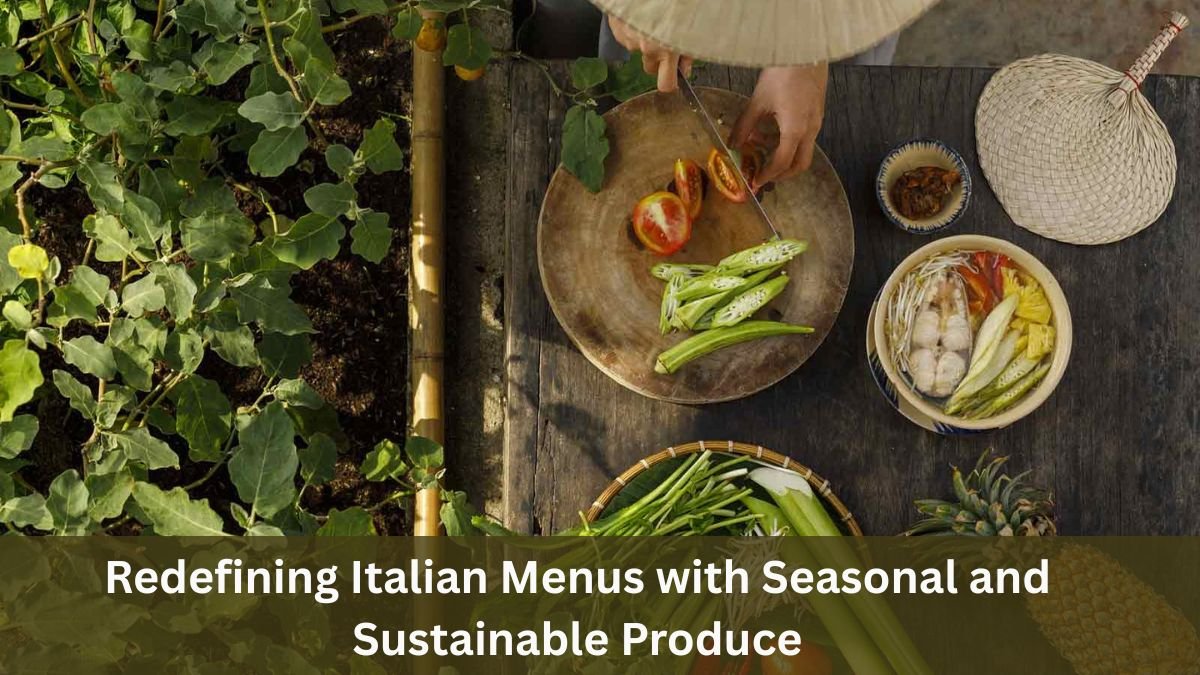When we think of Italy, we conjure up images of cheese-laden pizzas, buttery pastas and layers of sweet tiramisu. But did you know that today’s Italian food is moving beyond its traditional taste and is heading towards a new revolution?
Now Italian restaurants, cafes and home chefs are giving importance not only to taste but also to the environment, local farming and seasonal crops. A sustainable and seasonal thinking has changed the face of the Italian menu.
The Soul of Italian Food: Freshness and Simplicity
Traditional Italian food has always been based on the concept of straight from the farm to the plate. Pasta cooked in the kitchen of nonnas (grandmothers), sauce made from tomatoes plucked from the garden and gnocchi kneaded by hand – this was the true Italian identity.
But in the last few decades, artificiality had entered Italian food due to globalization and processed food. Now once again chefs and consumers are returning to the roots. The only difference is that now this return includes sustainability and eco-conscious cooking.
Seasonal and Sustainable: What does it mean?
Seasonal food:
Use of ingredients that are available in nature at that time. Such as tomatoes, olives, basil in summer and kale, turnips, or mushrooms in winter.
Sustainable food:
A farming and cooking system that puts less pressure on natural resources, supports local farmers, and also ensures food security for future generations.
When these two things come together, then an Italian menu is prepared which is not only unmatched in taste, but is also beneficial for the earth.
Change in the thinking of chefs
Today’s young chefs of Italy are no longer focusing only on ‘microgreen’ decoration or foreign cheese. They’re going to the fields, talking to farmers, and making sure what goes into their kitchens is fresh, indigenous, and natural.
For example:
Chef Massimo Bottura started turning leftovers into sustainable gourmet dishes at his restaurant Osteria Francescana. Chef Cristina Bowerman serves only seasonal menus at her restaurant in Rome.
Traditional Recipes, New Inventions
The recipes are the same now—but the ingredients are changing.
- Spring Pasta: Prepared in the spring with green peas, lemon zest, and fresh basil.
- Autumn Gnocchi: Pumpkin, brown butter, and saved walnut oil.
- Winter Risotto: A combination of wild mushrooms, truffle oil, and creamy Arborio rice.
These dishes are not just full of flavor, they’re also full of stories that come from the weather, the soil, and hard work.
Local wine and pairing
Italy’s wine culture has not been spared by this change. Now, restaurants choose wines from the same farm or province as the food.
Examples:
Bruschetta from Tuscany with Chianti wine
Sicily with seafood dishes with Etna Bianco
This not only enhances the taste but also reduces food-mileage.
An important step for the environment
Sustainable and seasonal Italian menus are not just a trend, they are also a responsible step against climate change.
- Seasonal produce reduces greenhouse gases.
- Shopping locally reduces fuel consumption.
- Recycling leftovers reduces food waste.
As the world grapples with the climate crisis, food can send a small but powerful message—“Eat thoughtfully.”
The role of consumers: What can we do?
You and I, who go to restaurants, cook or post pictures of food on social media, are also part of this change.
- Choose “seasonal specials” on the menu.
- Buy fruits and vegetables from local farmers.
- Don’t waste food.
- Ask staff at the restaurant: “Is this local and seasonal?”
Promote restaurants and chefs on social media who practice sustainability.
Social media and millennial tastes
Today’s millennials don’t just want food—they also want a story, value and the beauty of images. When a dish is decorated with seasonal flowers, served on a wooden plate, and accompanied by an inspiring message—it not only fills the stomach, but also satisfies the mind and thoughts.
Conclusion
A seasonal and sustainable Italian menu is not a “trend,” it’s a return to a culture—where eating is not just about taste, but about responsibility, connection, and respect.
The next time you visit an Italian restaurant, don’t just look at the pasta—look at the farm it came from, the season it was made in, and the thoughtfulness with which it was served.
